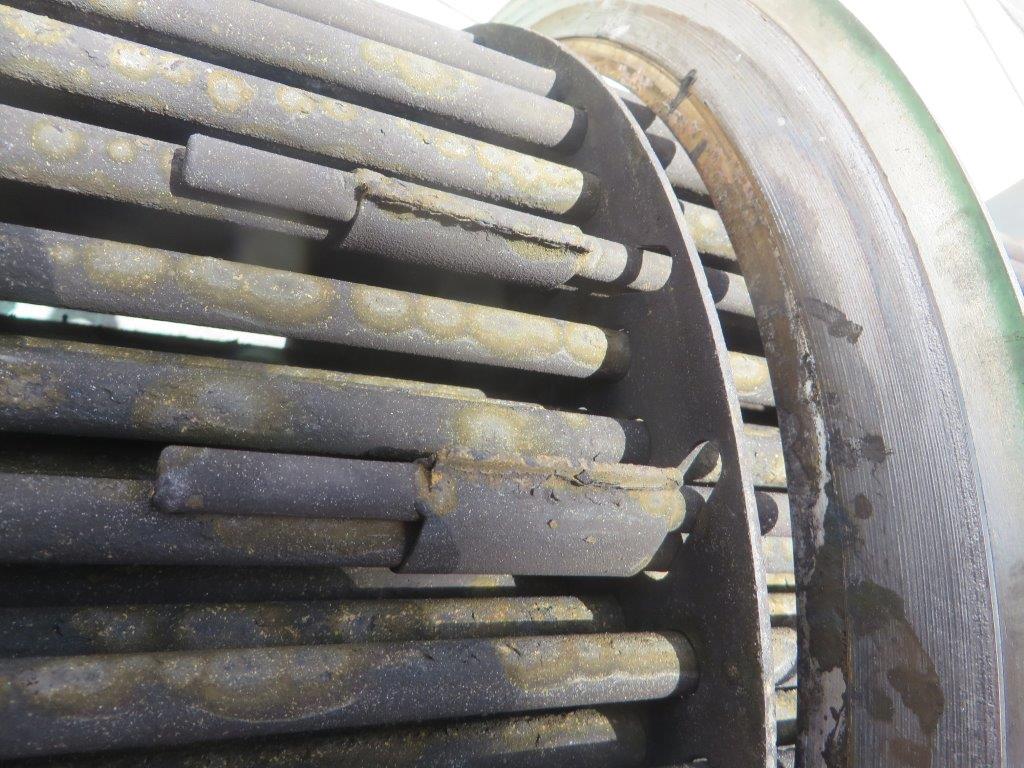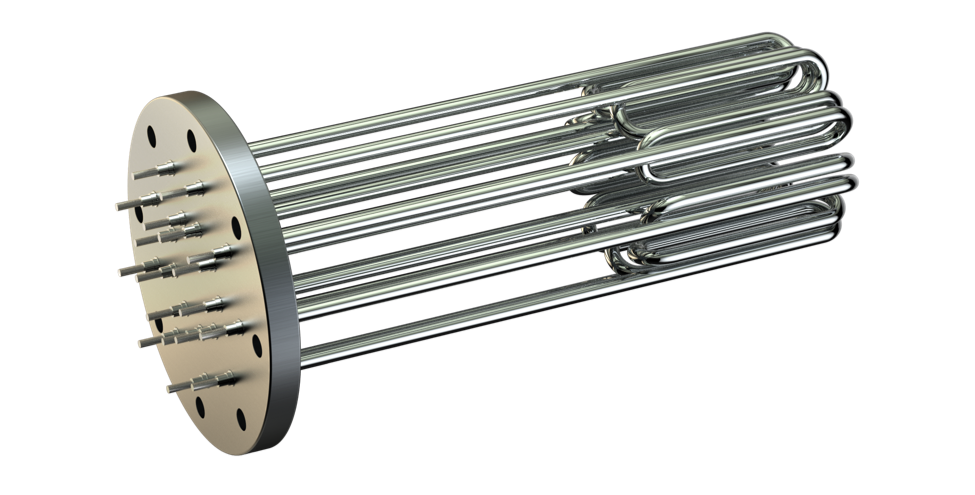Passivating Heaters
Last updated on November 23rd, 2023 at 03:40 pm
 Certain substances will react with the atmosphere due to their chemical composition. A slice of apple will turn brown if exposed for too long. Blood starts to clot once exposed to the surface. Iron starts to rust due to a reaction with oxygen in the air. Now all these reactions may seem relatively harmless, but they can cause a lot of damage in the long term. Especially in the industrial sector where precise calibration is required within machines.
Certain substances will react with the atmosphere due to their chemical composition. A slice of apple will turn brown if exposed for too long. Blood starts to clot once exposed to the surface. Iron starts to rust due to a reaction with oxygen in the air. Now all these reactions may seem relatively harmless, but they can cause a lot of damage in the long term. Especially in the industrial sector where precise calibration is required within machines.
The cost of corrosion, the degradation of metal properties due to chemical reactions, is estimated to amount to 1 to 5% of the GNP of nations[1]. Taking an average of 3%, this means that corrosion costs over $500 billion/year in the United States alone.
In recent years, passivation has gained a lot of traction as a way of preventing these ‘corrosive reactions’ within industrial machinery such as tubes, pipes and flanges used in electrical heaters.
Understanding Passivation
Before going into the specifics of passivating heaters and their uses, it is important to understand what passivation actually is. Often times, you may have heard of people being too “passive” or indifferent to whatever is happening around them. Though the passivation we are talking about is a chemical process, it still means the same as the layman word “passive” i.e. being indifferent to the surroundings.
It is well known that stainless steel and other chromium-containing alloys are protected from rusting by the formation of a protective surface layer of chromium trioxide (Cr2O3). This layer acts as a barrier to diffusion of oxygen from the surface, preventing oxidation of the bulk metal.
Now, you might be wondering why industrial heaters are passivated if stainless steel already forms a protective oxide layer naturally. On paper, the chromium oxide layer may seem sufficient to protect the heaters. But in practical terms, the layer is only a few atoms thick. Sometimes, fabrication steps such as welding and annealing degrade the chromium trioxide layer. For both welding and annealing, the very high temperatures lead to the formation of iron oxide. Fe₂O₃ mixes with the chromium trioxide and degrade its effectiveness. Additionally, the protective layer may be attacked by corrosive chemicals during service.
In the simplest of terms, passivation is a process used to make a material, such as stainless steel, immune to the surrounding conditions. It does so by bringing it back to its original specifications. It even occurs naturally in the form of porous corrosion coating in some metals, but as an industrial process, passivation involves protecting the metal from reacting with the surroundings by coating it with a thin layer of oxide film.
Chemical Effect of Passivation
One thing to keep in mind, however, is that passivation affects a substance chemically, not physically. The oxide layer formed due to the process is less than 1/100th the thickness of a human hair, impossible to spot with the human eye. Therefore, the surface does not change outwardly, as it would with electro-polishing, as demonstrated below:[2],[3],[4] “Passive” in science means less responsive towards environmental factors. Therefore, the new passivized layer of chromium in electric heaters acts as a protective layer and contributes to the extension in useful life of heaters[5].
Why Are Heaters Passivated?
 Saying that heaters are passivated is a little vague, since it is not every part of a heater that undergoes the passivation process. For instance, the resistance wire (NiCr) used in industrial immersive heaters is made of a Ni-chrome alloy that consists of 80% Nickel and 20% Chromium[6],[7],[8]. Ni-chrome is self-passivating due to the chromium oxide layer that it forms, allowing it to be stable even at high temperatures. As the Ni-chrome passivation layer is not attacked during manufacture or usage, it does not need to be passivated. The parts that are passivated are the immersed parts, particularly:
Saying that heaters are passivated is a little vague, since it is not every part of a heater that undergoes the passivation process. For instance, the resistance wire (NiCr) used in industrial immersive heaters is made of a Ni-chrome alloy that consists of 80% Nickel and 20% Chromium[6],[7],[8]. Ni-chrome is self-passivating due to the chromium oxide layer that it forms, allowing it to be stable even at high temperatures. As the Ni-chrome passivation layer is not attacked during manufacture or usage, it does not need to be passivated. The parts that are passivated are the immersed parts, particularly:
- The annealed section of the element sheath. During manufacture, the elements are cold-rolled to compress the magnesium oxide. This causes micro-stresses, which must be relieved by annealing. Annealing is done by raising the temperature of the sheath to about 2000 oF. Iron oxide forms during annealing, degrading the chromium trioxide layer;
- The weld of the element sheath and of the pressure vessel pipe to the flange. Welding requires raising the metal temperature above its melting point. Here again, iron oxide forms during annealing, degrading the chromium trioxide layer.
Applications of Passivation in Industrial Heaters
Passivating a heater boasts many economical as well as environmental advantages, which is why it is now part of the standard post-production processes in most industries.
Corrosion Resistance and Extending Life of Heater
The more corrosive the application where the heater will be used, the stronger the requirement for passivation. When operating in a corrosive fluid, due to the high temperatures that these elements generate, certain free radicals tend to accumulate within the surface of the heater overtime. These free radicals are atoms lacking an electron or two, which is why they are more vulnerable to reactions with the surrounding atoms. These reactions eventually result in corrosion, causing a deviation in the integrity as well as the heating properties of the element sheath.
Calcium Carbonate Deposits
There is another major problem within most industrial immersion heaters; when heating water, the non-uniform hardness of the surrounding liquid can cause calcium carbonate scales to build up on the element metal sheath. These scales break free due to expansion (heating) and contraction (cooling) of the heating element over time. As a result, the scales start to accumulate at the bottom of the water tank. This causes several problems. One of which is a reduction in the capacity of a tank along with decreased life of the heater. Passivating the heating element prevents it from building up these lime deposits as well as from corrosion. This means that the surrounding liquid/gas is able to raise temperature more efficiently due uniform distribution of heat.
How is Passivation Achieved?
The passivation method returns the stainless steel or metal to its original untouched form. It prevents dirt and lubricants such as machine oil and shredded particles to accumulate on the surface. Passivation is divided into two sub-processes: pre-cleaning (also called pickling) and submersion. The importance of pre-cleaning the parts cannot be underestimated, as there is always an infinitesimal amount of corrosion leftover in a metal, if not from previous exposure, then by contamination due to use of non-passivated parts (such as iron) in its manufacture.
Step 1: Pre-Cleaning
Without pre-cleaning, the contaminations in the metal will react with the passivating acid (step 2) and form gas bubbles that accumulate on the surface of the metal. This interferes with the process and in fact accelerating corrosion. Many hydrocarbon contaminations will not let the acid pass through due to their resistive properties. Pre-cleaning is done by using de-greasers and cleaners that remove any fluids, dust dirt and other contaminations that were applied on the surface during fabrication.
Step 2: Submersion
On to the main step. The metal part is then submerged into a passivation solution tank that allows the oxide layer to form. For stainless steel, a typical passivation solution is a combination of nitric acid and sodium dichromate. The acid removes all sulphides and rust contaminations that are accumulating, bringing the part back to its original pure state. The new oxide layer formed over the heating metal is impermeable to the surrounding temperatures, thus making it “passive”[9],[10].
References
[1] Roberge, P. R.: Corrosion Engineering – Principles and Practice, McGraw-Hill, 2008, p. 13. [2]http://www.mmsonline.com/articles/how-to-passivate-stainless-steel-parts [3]http://www.delstar.com/passivating.html [4]http://www.ctgclean.com/tech-blog/2012/04/what-is-passivation/ [5]http://chemistry.about.com/cs/metalsandalloys/a/aa071201a_2.htm [6]http://en.wikipedia.org/wiki/Ni-chrome [7]http://en.wikipedia.org/wiki/Electric_heating (immersion heaters) [8]http://en.wikipedia.org/wiki/Heating_element [9]http://en.wikipedia.org/wiki/Passivation_(chemistry) [10] Arrow Cryogenics
